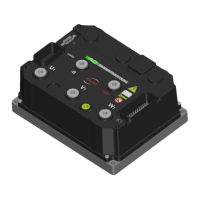9 Appendix A. General technical overview of SME
technology
9.1 History of AC induction motors and AC controllers.
The AC induction motor, which was invented in the 1880s, is the basic workhorse of
industry; induction motors perform almost 90 percent of the electrical to mechanical power
conversion in industrial machinery.
The motivation for the development of the AC drives technology was the exploitation of the
advantages of the AC induction motor. By the early 1980s, thanks to rapid developments in
microelectronics and power semiconductors technology, was possible to offer AC induction
motor/controller combinations which were competitive with traditional DC motor/drives in
many classes of applications.
Within a few years, machine tool and industrial robot manufacturers were selecting AC
motors and adjustable frequency drives for their superior torque and speed capabilities,
reliability and improved thermal performance.
The recent advancements in control techniques, such as flux vector control, have greatly
enhanced the speed and torque control capability as well as efficiency and dynamic
performance of AC induction motor/drives.
9.2 Technical advantages of AC induction motors.
The main benefits of AC technology when compared to DC technology, include lower
costs, higher operating reliability and longer lifetime.
With no brushes or commutator, AC induction motors are practically maintenance free and
are easily sealed for superior environmental protection and higher IP ratings. With no
requirement for periodic brush inspection and maintenance, the vehicle designer has more
flexibility in the placement of an induction motor.
AC induction motors provide higher acceleration and deceleration torque, particularly at
high speed, where the commutation limit of DC brush type motors limits their ability to
generate torque.
AC drives inherently provide four quadrant operation which means that an AC drive can
directly accelerate or brake a motor in both directions. The forward and reverse contactors
required by many DC drives are eliminated, along with the associated noise, dead time
and maintenance requirements.
Regeneration during braking is a natural characteristic of AC drives. No external
components such as contactors or regeneration resistors frequently associated with DC
motor/drive systems are required. Furthermore, AC drives return a higher percentage of
the regenerated energy to the vehicle battery, providing extended operating time
compared to commonly used DC systems.
Closed loop speed regulation, another built-in characteristic of Flux vector controlled
drives, has significant implications about safety and efficiency for the vehicle.
PRELIMINARY VERSION 50


